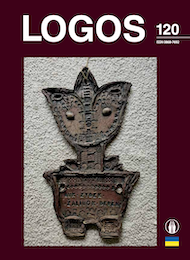Word Order in Determinative Constructions in Chinese: Cognitive Aspect
Word Order in Determinative Constructions in Chinese: Cognitive Aspect
Author(s): Haiyong YUSubject(s): Syntax, Psycholinguistics, Sociolinguistics, Cognitive linguistics
Published by: Visuomeninė organizacija »LOGOS«
Keywords: syntactic patterns; cognitive processes; national consciousness; description; cognition;
Summary/Abstract: The purpose of this study is to analyse the cognitive aspect of word order in multiple Chinese attributive constructions and the correlation between cognitive processes of Chinese language speakers and the word order in attributive constructions. The key research methods in this study are structural, syntactic, and cognitive analysis, with the complementary use of the analytic-synthetic method. For example, the principles “from the reference object to the target object”, “from the whole to the parts”, “from the larger to the smaller” revealed the cognitive nature of the Chinese language, which aims at gradually narrowing down broad contexts. Models of the principle “from events to results” were created, highlighting the importance of maintaining spatial-temporal sequences in the Chinese language. The principle “from restrictive modifiers” (location, time, quantity of items) to “descriptive modifiers” (attributes) is based on the cognitive necessity of first narrowing down the range of objects and then providing characteristics. From the perspective of cognitive processes, the principle of semantic similarity in attributive constructions can be easily explained through the concept that the smaller the distance between concepts (semantics) and syntactic structures, the better their understanding by Chinese language speakers. The study also found that the speed of cognitive information processing depends on the observance and effective application of the above principles.
Journal: LOGOS - A Journal of Religion, Philosophy, Comparative Cultural Studies and Art
- Issue Year: 2024
- Issue No: 120
- Page Range: 27-42
- Page Count: 16
- Language: English

